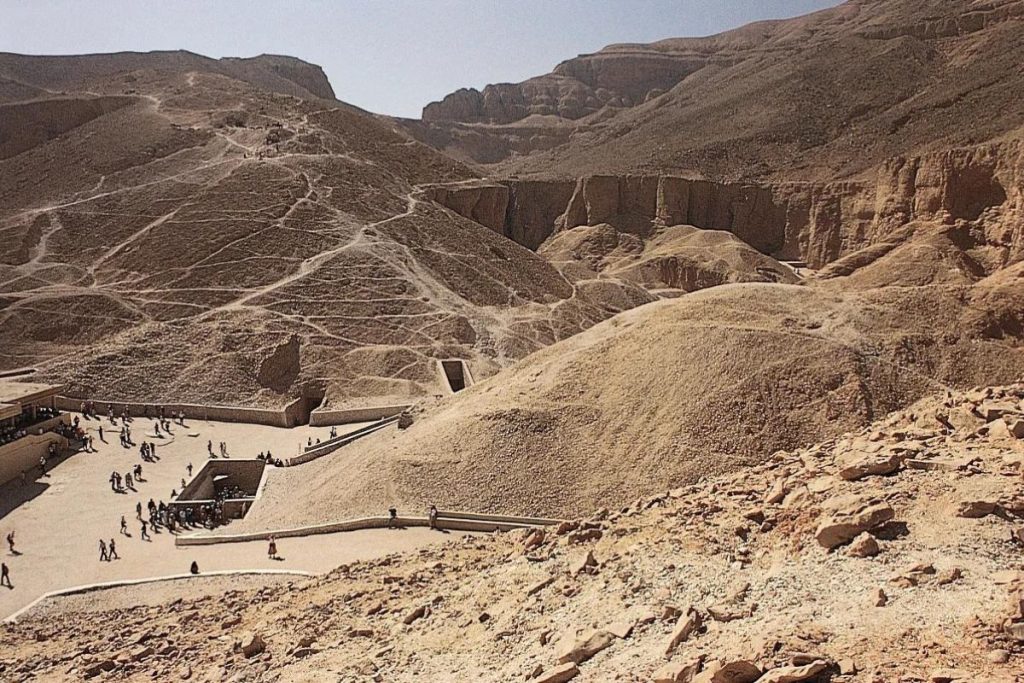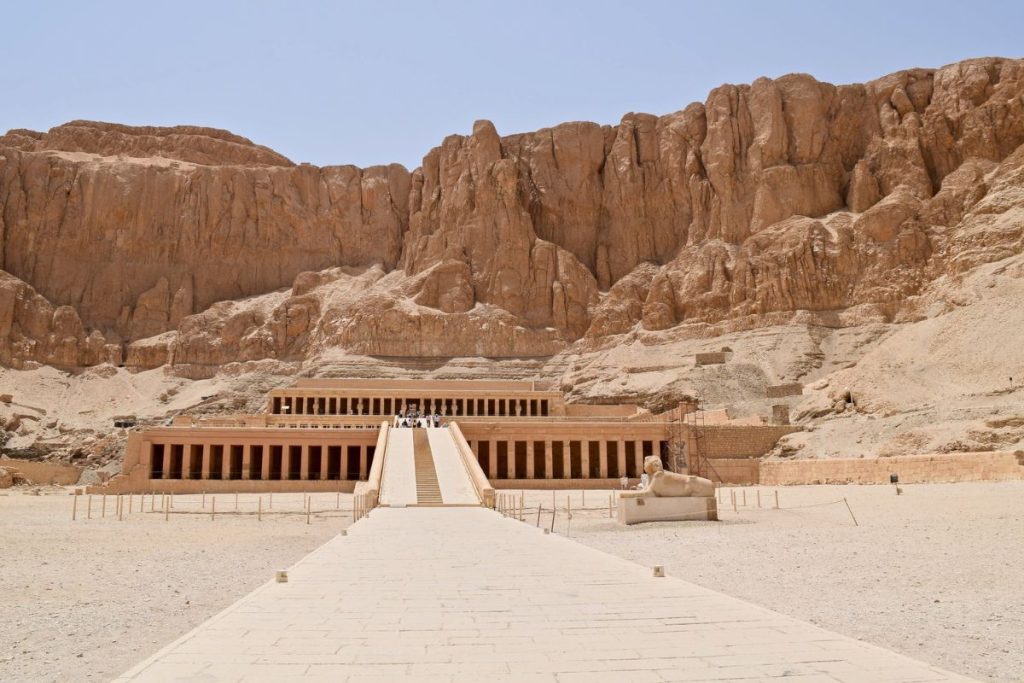Step Into Ancient Egypt: Exploring Luxor’s Timeless Temples

Introduction: Step Into Ancient Egypt—Exploring Luxor’s Timeless Temples
Welcome to Luxor, the city that is often referred to as the world’s greatest open-air museum. Steeped in ancient history, Luxor was once the capital of Egypt during the reign of the New Kingdom pharaohs, and today it stands as a testament to the power, grandeur, and religious devotion of one of the world’s oldest civilizations.
Luxor is a place where the echoes of ancient Egypt can still be heard—where the temples, tombs, and monuments tell the stories of gods, kings, and queens who ruled thousands of years ago. In this guide, we will delve into the history and grandeur of Luxor’s most iconic sites: the sprawling Karnak Temple Complex, the majestic Luxor Temple, the legendary Valley of the Kings, and the unique Temple of Hatshepsut.
Prepare to walk in the footsteps of the pharaohs and uncover the secrets of this ancient city.
1. Karnak Temple Complex: A Monument to the Gods
Our journey begins at the Karnak Temple Complex, one of the most awe-inspiring and significant religious sites in the ancient world. Construction of Karnak began during the Middle Kingdom (around 2000 BC) but continued for over 2,000 years, with contributions from many of Egypt’s most powerful pharaohs, including Seti I, Ramses II, and Hatshepsut. It is the largest temple complex ever built by human hands, covering an area of over 200 acres.
Karnak was dedicated primarily to the god Amun-Ra, the king of the gods, and was a center for religious ceremonies, offerings, and grand festivals. The vastness of the complex mirrors the importance of Amun-Ra in Egyptian cosmology. It is said that Karnak was built not just to honor the gods but also to demonstrate the divine right of the pharaohs to rule.
One of Karnak’s most breathtaking features is the Hypostyle Hall, a massive colonnaded space with 134 towering stone pillars. These columns, each standing at over 20 meters tall, are intricately decorated with scenes depicting pharaohs making offerings to the gods. As you walk through the hall, you can almost hear the chants of priests echoing through time, their rituals filling the sacred space. It’s as if the presence of the gods still lingers here, carried by the wind that whispers through the towering columns.
Beyond the Hypostyle Hall lies the Sacred Lake, an enormous artificial lake used for purification rituals. Priests would bathe in these waters before performing ceremonies within the temple. Today, the lake remains, offering a reflective moment amid the sprawling ruins. As you stand by its edge, gazing at the temple’s reflection, it’s easy to imagine the elaborate rituals that once unfolded here.
Historical Insight:
Karnak wasn’t just a religious center; it was a testament to the power of the pharaohs. Each ruler added their own touch, extending or enhancing the complex to leave their mark on this sacred site. This constant construction transformed Karnak into a symbol of both spiritual devotion and royal authority.

2. Luxor Temple: A Testament to Kingship and Eternal Rebirth
Just a short distance from Karnak lies Luxor Temple, another jewel in Luxor’s crown. Built primarily by Amenhotep III in the 14th century BC and later expanded by Ramses II, Luxor Temple was dedicated not to a god but to the concept of kingship itself. It was here that the Opet Festival, a grand annual celebration, was held to honor the rejuvenation of the king’s divine right to rule.
Unlike Karnak, which was a temple of religious devotion, Luxor Temple was more political, symbolizing the eternal bond between the pharaohs and the gods. The temple was linked to Karnak by a grand avenue of sphinxes, many of which still line the pathway today, their weathered faces a reminder of the grandeur that once defined the city.
One of the most captivating aspects of Luxor Temple is its Colonnade of Amenhotep III, a stunning corridor of 14 towering columns that seem to stretch endlessly toward the sky. Each column is adorned with reliefs that depict the pharaohs making offerings to the gods, reminding visitors of the divine connection that justified their rule.
But Luxor Temple takes on an entirely different character after the sun sets. At night, the temple is bathed in golden light, casting an ethereal glow over the statues of Ramses II and the towering pylons. The crowds thin, and the silence of the night is broken only by the whisper of the breeze. Strolling through the ruins under the stars, you can almost feel the presence of the ancient kings, watching over their legacy.
Historical Insight:
Luxor Temple has stood as a witness to centuries of history. From its use by Alexander the Great, who had his name inscribed on its walls, to its conversion into a Christian church and later a mosque, the temple reflects the layers of history that Luxor holds within its ancient stones.

3. Valley of the Kings: The Eternal Resting Place of Pharaohs
Tucked away in the cliffs of Luxor’s west bank lies the Valley of the Kings, the sacred burial ground of Egypt’s New Kingdom pharaohs. Here, in these quiet, hidden tombs, some of the most powerful rulers of ancient Egypt were laid to rest, including Tutankhamun, Seti I, and Ramses II.
The decision to bury the pharaohs in the Valley of the Kings, rather than in massive pyramids, was made during the New Kingdom as a way to protect the tombs from grave robbers. These tombs were carefully hidden within the valley, their entrances often concealed by the natural landscape. Inside, however, the tombs were anything but modest. Each one was decorated with stunning murals and hieroglyphs that depicted the pharaoh’s journey to the afterlife.
Descending into the tombs feels like stepping into another world. The air is cool, the walls are alive with color, and the intricate paintings seem to pulse with life, despite being over 3,000 years old. The tomb of King Tutankhamun, though smaller than others, remains one of the most famous due to the treasures discovered within. The tombs of Ramses VI and Seti I are particularly breathtaking, with vast chambers filled with vibrant, well-preserved art.
Historical Insight:
The Valley of the Kings is a place of both mystery and reverence. Despite their efforts, many tombs were looted in antiquity, though their grandeur still speaks volumes about the importance the Egyptians placed on the afterlife. The discovery of Tutankhamun’s tomb by Howard Carter in 1922 remains one of the greatest archaeological finds in history, reminding us that the valley still holds secrets waiting to be uncovered.

4. Hatshepsut’s Temple: A Tribute to Egypt’s Most Powerful Female Pharaoh
Built into the cliffs at Deir el-Bahari, the Mortuary Temple of Hatshepsut is a stunning architectural marvel that reflects both the grandeur and unique legacy of Queen Hatshepsut, one of Egypt’s few female pharaohs. Completed in the 15th century BC, the temple’s terraces seem to rise naturally from the desert landscape, blending seamlessly with the surrounding cliffs.
Hatshepsut was a ruler who defied tradition. She took on the full titles and regalia of a pharaoh, often depicting herself as a male in statues and reliefs. Her reign was marked by peace and prosperity, and her temple reflects this sense of grandeur and achievement. The walls of the temple are decorated with scenes that celebrate her divine birth, her famous expedition to the Land of Punt, and her close relationship with the god Amun-Ra.
One of the most awe-inspiring features of the temple is the view from its terraces. Standing here, you can gaze out over the vast desert plain, the Nile flowing in the distance, and the rugged mountains that frame the landscape. It’s a view that reminds visitors of Egypt’s vastness and its eternal connection to the land.
Historical Insight:
Hatshepsut’s temple is a monument to a woman who ruled with strength and vision. Despite efforts by her successors to erase her legacy (her statues were defaced and her name was removed from many records), Hatshepsut’s temple stands as a lasting tribute to her incredible reign.

Practical Tips for Visiting Luxor’s Temples
- Best Time to Visit: The best time to visit Luxor is from October to April, when the weather is cooler and more comfortable for exploring the open-air sites.
- Hiring a Guide: To fully appreciate the rich history of Luxor’s temples, hiring a guide is highly recommended. Guides can offer fascinating insights and stories that bring the ancient sites to life.
- Staying Hydrated: The desert heat can be intense, even in the cooler months, so bring plenty of water and wear light, breathable clothing.
- Respect the Sites: Remember that these temples and tombs are thousands of years old. Follow the rules (such as no photography in certain tombs) and help preserve these ancient treasures for future generations.
Conclusion: Walk Through History
Luxor is more than just a city of temples and tombs—it’s a living museum where the past comes alive. From the sprawling majesty of Karnak to the intimate beauty of the Valley of the Kings, Luxor’s ancient sites offer a unique glimpse into the world of the pharaohs.
These temples were not just places of worship; they were symbols of power, devotion, and the eternal quest for immortality. As you walk through these timeless monuments, you’ll be stepping into a history that is still very much alive. Luxor’s temples are not just relics of the past—they are bridges to a time when gods walked the Earth and kings ruled with divine authority.
Prepare to be inspired, humbled, and awed by the grandeur and mystery of ancient Egypt.









Your point of view caught my eye and was very interesting. Thanks. I have a question for you.